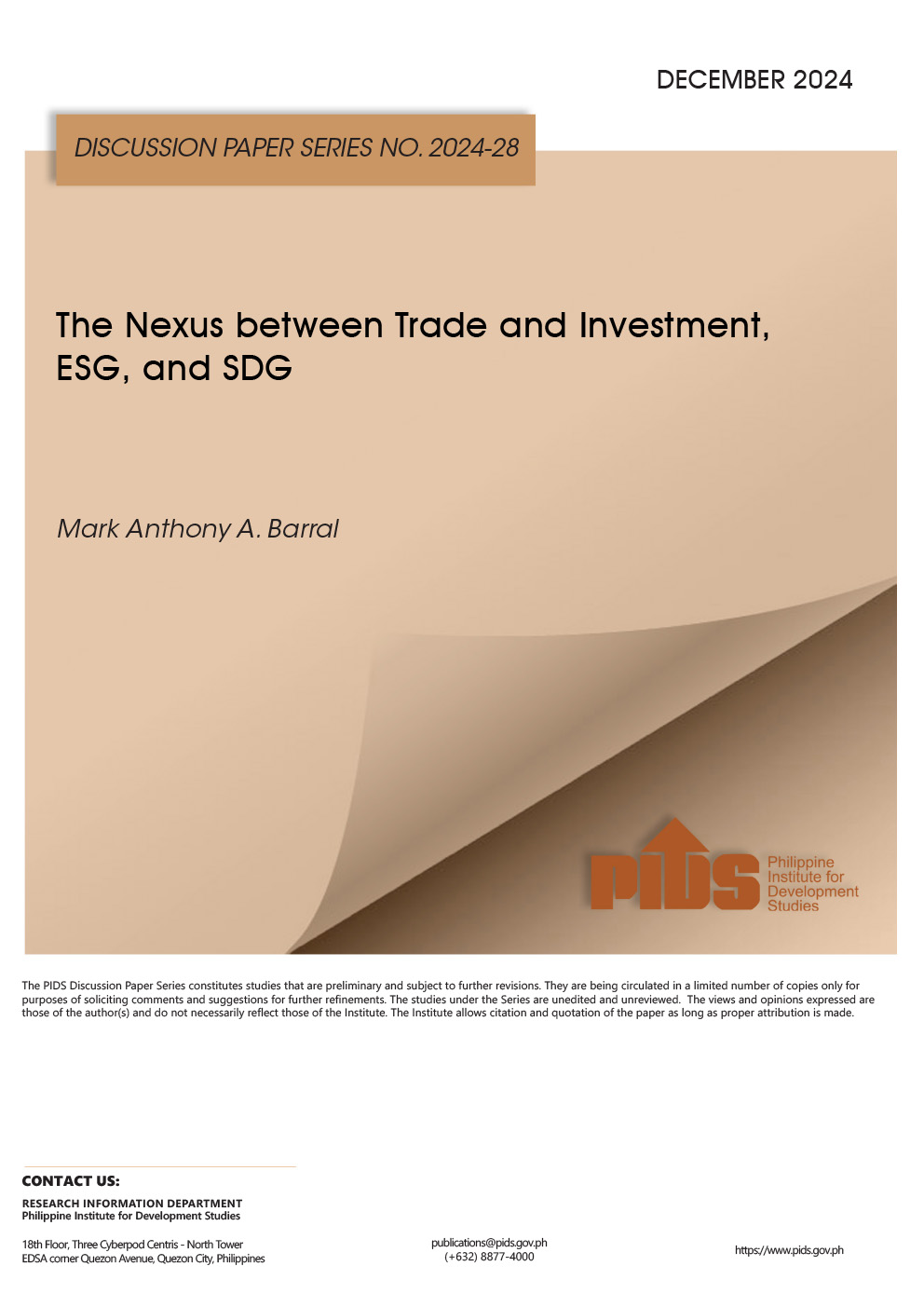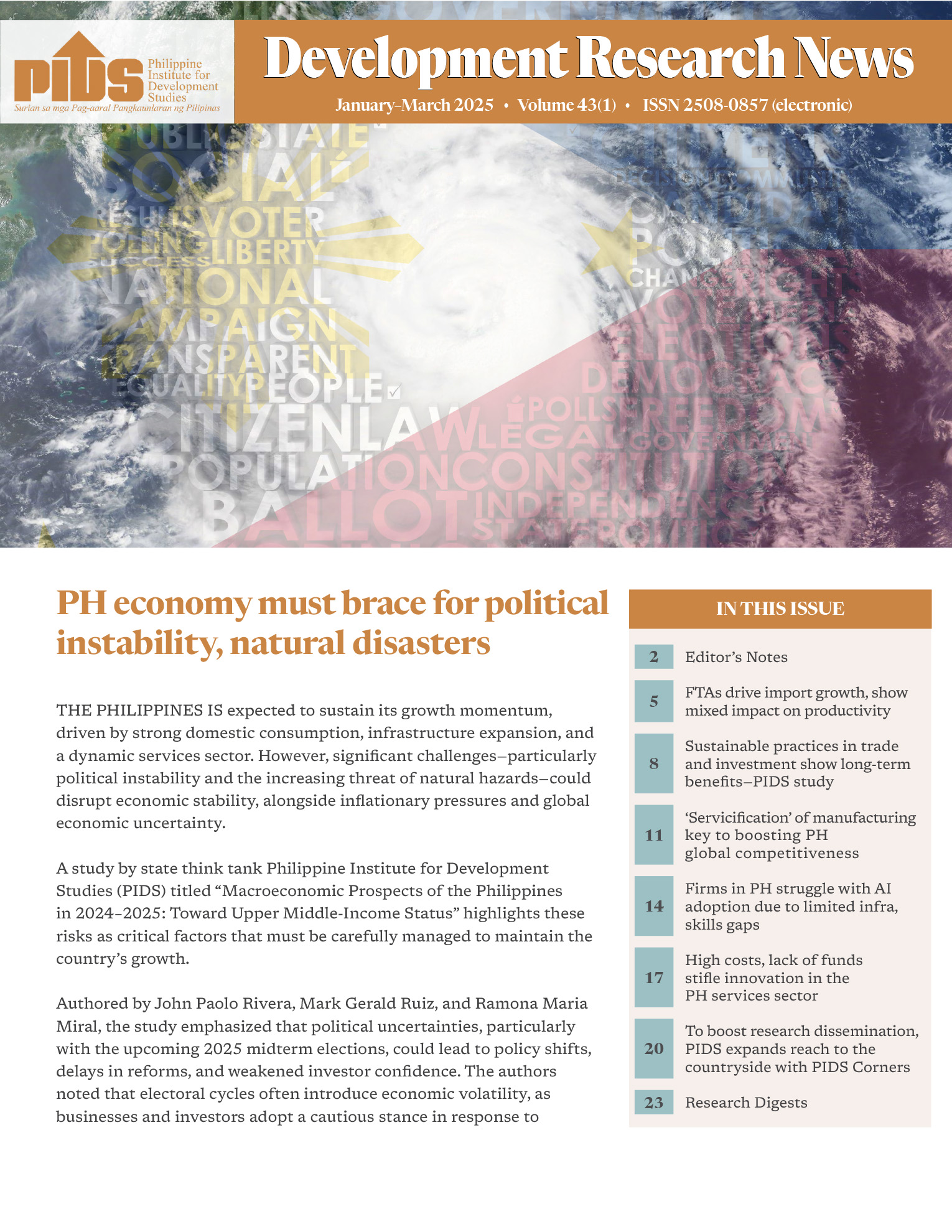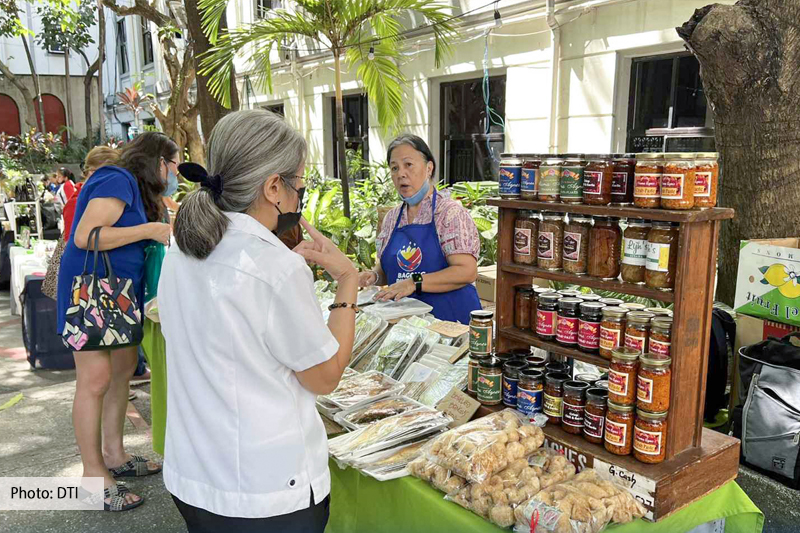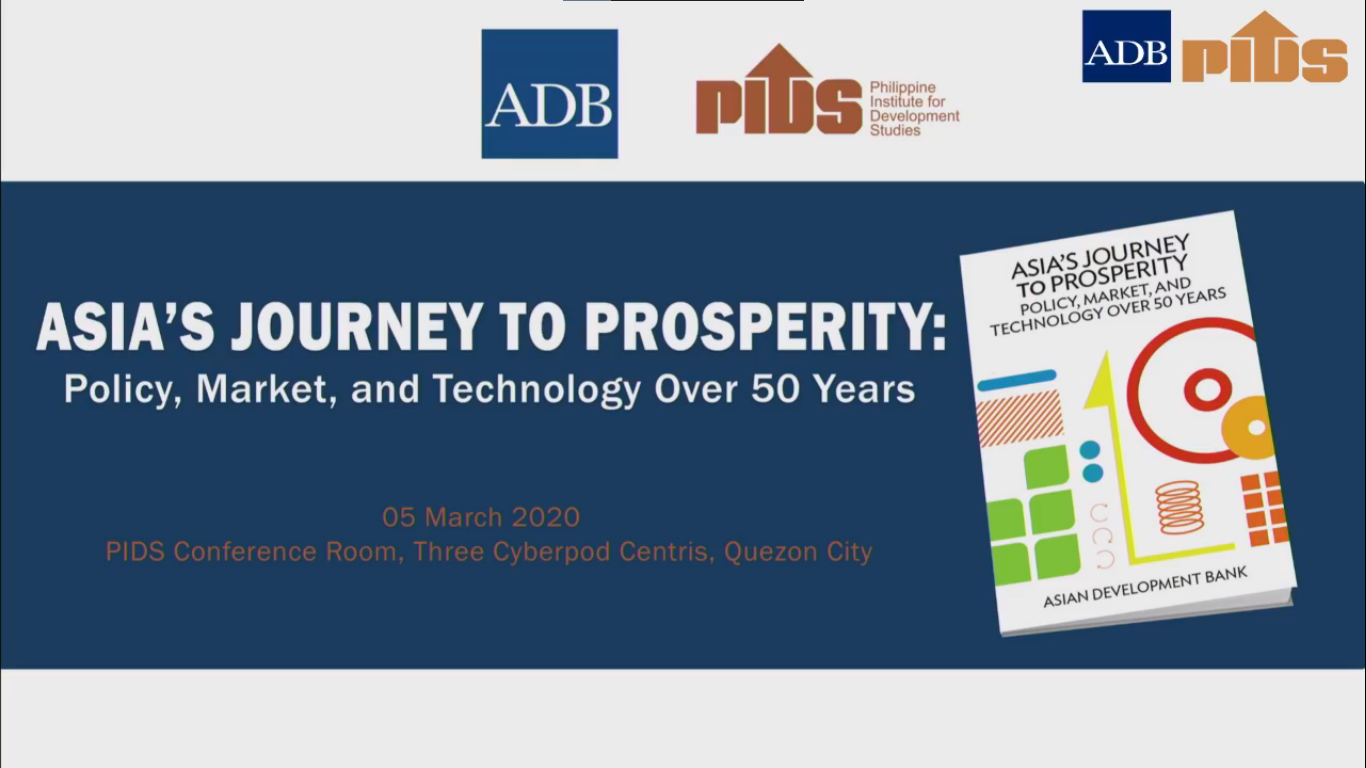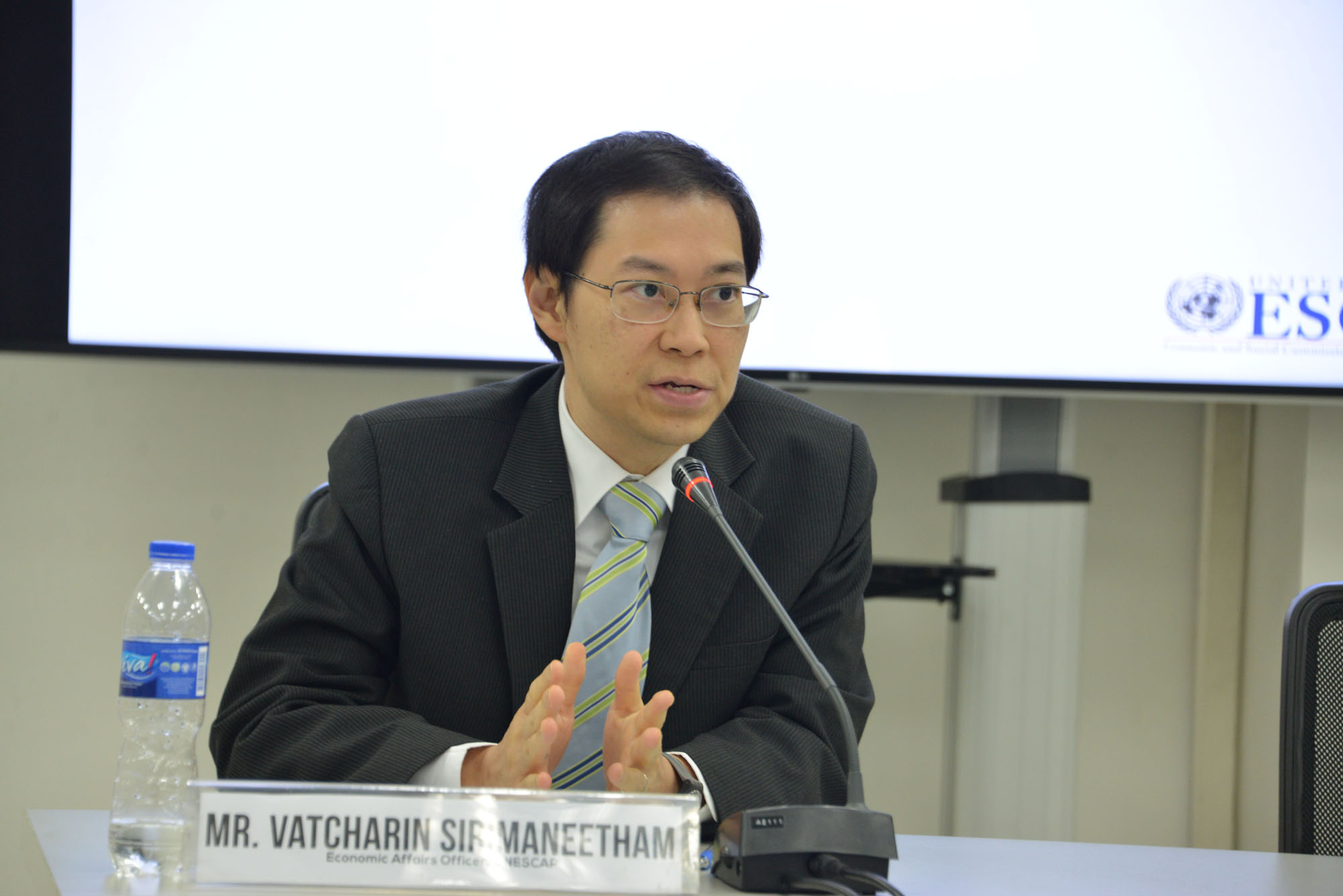
To achieve the 2030 Agenda for Sustainable Development Goals (SDGs), the Asia-Pacific region needs an annual investment of about USD 1.5 trillion (equivalent to PHP 78.9 trillion), according to the United Nations Economic and Social Commission for Asia and the Pacific (UNESCAP).
“This is on top of what [the region] is already spending [for SDGs],” said Vatcharin Sirimaneetham, UNESCAP’s economic affairs officer, during a policy dialogue coorganized with the Philippine Institute for Development Studies (PIDS).
Presenting the results of UNESCAP’s “Economic and Social Survey of Asia and the Pacific 2019”, Sirimaneetham said it is important for the region to “look beyond economic growth and integrate the social dimensions of development”.
He added that there needs to be a “shift in mindset” by prioritizing the “well-being of the people and the planet first”.
Based on the Survey 2019, the region should annually invest an additional USD 669 billion (or PHP 35.2 trillion) on people to ensure the implementation of targeted cash transfers, efficient social protection services, nutrition-specific interventions, universal access to quality education and health coverage, as well as to promote agricultural productivity.
An additional USD 196 billion (or PHP 10.3 trillion) should also be invested for the improvement of the region’s infrastructure and to ensure access to water and sanitation, information and communications technology, and transportation. Meanwhile, another USD 590 billion (or PHP 31 trillion) should be spent on the protection of environment to ensure access to clean energy, among others. When combined, the three estimated costs would total to about USD 1.5 trillion (or PHP78.9 trillion) per year, Sirimaneetham said.
“They [Asian countries] will not be able to finance these SDGs by themselves; it is possible only with strong development partnership,” Sirimaneetham explained, adding that governments in the Asia-Pacific region need to tap the private sector to afford these.
The Philippines is one of the 193 UN-member states that committed to achieving the 17 SDGs by 2030. But how is the country doing so far?
Speaking in the same event, PIDS Senior Research Fellow Jose Ramon Albert said that the Philippine Development Plan as well as the country’s long-term development plans included in the Ambisyon Natin 2040 are in line with the 17 SDGs.
In terms of SDG on quality education, Albert said the Philippines “has seen marked improvements”, with basic education performance indicators, such as completion and cohort survival rates, having significantly improved. However, he noted gaps in the secondary education, especially in terms of absorptive capacity. The teacher-student ratio at the primary level is 1:32 and 1:27 at the secondary level. Four out of 5 schools have computers, but only 1 out of 4 schools have access to Internet, as of 2016.
In terms of SDG on decent work and economic growth, Albert mentioned the country is seeing a positive trend for the past seven years. However, while labor indicators show positive growth, disparities can still be seen in terms of gender and region. He added that the quality of jobs needs to be improved to help address the 16.1-percent underemployment rate in the country.
Lastly, for SDG on reducing inequality, Albert said that while there are improvements in economic growth in the country, these improvements “vary drastically across regions”.
“Regional income disparities are stark, with the National Capital Region’s average per capita income thrice that of Autonomous Region in Muslim Mindanao’s,” he explained. ###
To access UNESCAP’s Economic and Social Survey of Asia and the Pacific 2019, click here.
“This is on top of what [the region] is already spending [for SDGs],” said Vatcharin Sirimaneetham, UNESCAP’s economic affairs officer, during a policy dialogue coorganized with the Philippine Institute for Development Studies (PIDS).
Presenting the results of UNESCAP’s “Economic and Social Survey of Asia and the Pacific 2019”, Sirimaneetham said it is important for the region to “look beyond economic growth and integrate the social dimensions of development”.
He added that there needs to be a “shift in mindset” by prioritizing the “well-being of the people and the planet first”.
Based on the Survey 2019, the region should annually invest an additional USD 669 billion (or PHP 35.2 trillion) on people to ensure the implementation of targeted cash transfers, efficient social protection services, nutrition-specific interventions, universal access to quality education and health coverage, as well as to promote agricultural productivity.
An additional USD 196 billion (or PHP 10.3 trillion) should also be invested for the improvement of the region’s infrastructure and to ensure access to water and sanitation, information and communications technology, and transportation. Meanwhile, another USD 590 billion (or PHP 31 trillion) should be spent on the protection of environment to ensure access to clean energy, among others. When combined, the three estimated costs would total to about USD 1.5 trillion (or PHP78.9 trillion) per year, Sirimaneetham said.
“They [Asian countries] will not be able to finance these SDGs by themselves; it is possible only with strong development partnership,” Sirimaneetham explained, adding that governments in the Asia-Pacific region need to tap the private sector to afford these.
The Philippines is one of the 193 UN-member states that committed to achieving the 17 SDGs by 2030. But how is the country doing so far?
Speaking in the same event, PIDS Senior Research Fellow Jose Ramon Albert said that the Philippine Development Plan as well as the country’s long-term development plans included in the Ambisyon Natin 2040 are in line with the 17 SDGs.
In terms of SDG on quality education, Albert said the Philippines “has seen marked improvements”, with basic education performance indicators, such as completion and cohort survival rates, having significantly improved. However, he noted gaps in the secondary education, especially in terms of absorptive capacity. The teacher-student ratio at the primary level is 1:32 and 1:27 at the secondary level. Four out of 5 schools have computers, but only 1 out of 4 schools have access to Internet, as of 2016.
In terms of SDG on decent work and economic growth, Albert mentioned the country is seeing a positive trend for the past seven years. However, while labor indicators show positive growth, disparities can still be seen in terms of gender and region. He added that the quality of jobs needs to be improved to help address the 16.1-percent underemployment rate in the country.
Lastly, for SDG on reducing inequality, Albert said that while there are improvements in economic growth in the country, these improvements “vary drastically across regions”.
“Regional income disparities are stark, with the National Capital Region’s average per capita income thrice that of Autonomous Region in Muslim Mindanao’s,” he explained. ###
To access UNESCAP’s Economic and Social Survey of Asia and the Pacific 2019, click here.


